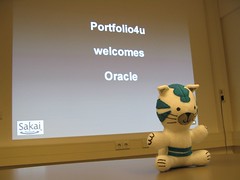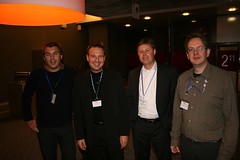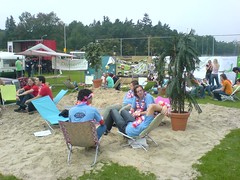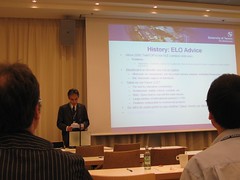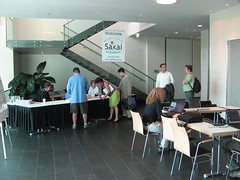Within the Sakai community, everyone does tremendous work. Some of us work hard on the code of Sakai, others on quality, others on clear requirements and there is a group working on the user experience (done trhough the Fluid project). Today I want to highlight another important aspect of the Sakai community. This is the group of people that work hard on Sakai for the users in non-English speaking countries. This is the Internationalization Working Group, where Beth Kirschner is the coordinator.
This group not only deals with pure translation of everthing that's inside Sakai. No, they really do "Internationalization", which means that Sakai will also adhere to conventions in other countries. Just to name one issue within this realm: date and time formatting. Over here in Europe we don't use the AM and PM convention. We have 24 hours in one day!
If you want to know what's being worked on, please go to Known I18N problems - WG: I18N & L10N - Confluence, where you will find the Top Internationalization Problems. There is also a Internationalization dashboard (hosted in Amsterdam), that shows you how many files have been internationalized so far. There is also a page with current information on the Dutch translation. Still some work to be done! Good to know: LOI, Portfolio4u, Edia and A New Spring have joined forces to get things done. These are all commercial companies working with Sakai in The Netherlands.
This group not only deals with pure translation of everthing that's inside Sakai. No, they really do "Internationalization", which means that Sakai will also adhere to conventions in other countries. Just to name one issue within this realm: date and time formatting. Over here in Europe we don't use the AM and PM convention. We have 24 hours in one day!
If you want to know what's being worked on, please go to Known I18N problems - WG: I18N & L10N - Confluence, where you will find the Top Internationalization Problems. There is also a Internationalization dashboard (hosted in Amsterdam), that shows you how many files have been internationalized so far. There is also a page with current information on the Dutch translation. Still some work to be done! Good to know: LOI, Portfolio4u, Edia and A New Spring have joined forces to get things done. These are all commercial companies working with Sakai in The Netherlands.


